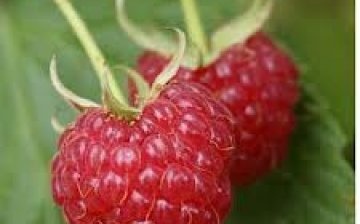Raspberry
Forest raspberry is a perennial shrub. Its aerial part can be represented by annual and biennial shoots. At first, the shoots only grow, and in the second year they already bloom and bear fruit. Shoots die off after fruiting.
The rhizome of the underground part of the bush is perennial, it consists of rhizome, lateral overgrowing and adventitious roots. Basically, raspberry roots lie in a layer of 20 centimeters, but some roots even reach a depth of 1.3 meters. The root system is 60 centimeters wide, and in some cases three meters wide.
Forest raspberries bloom in the second and third decade of June. The flowering and ripening time of raspberries is extended. The very first raspberries appear in a month or even earlier from the first flowers, and the last berries hang on the bushes until the first autumn frosts. Raspberries have a fruit, which consists of small drupes, they are located on the fruit. The raspberry fruit has a seed inside.
Forest raspberry is a medicinal plant. The composition of raspberries includes nicotinic acid, sugars, tannins, vitamins C, B, folic acid, flavonoids, trace elements, organic acids. Raspberry seeds are rich in fatty oil.
Raspberry has anti-inflammatory, hemostatic, astringent, soothing effect. It is used for sore throat, cough, for strengthening the gums, for constipation, for gastrointestinal pathology, for constipation, neuroses, menstrual disorders. From forest raspberries, infusions and decoctions are prepared, which are used both internally and as an external medicine.




Forest raspberries have always tasted better to me than grown in gardens. Maybe because they usually came across in small quantities.